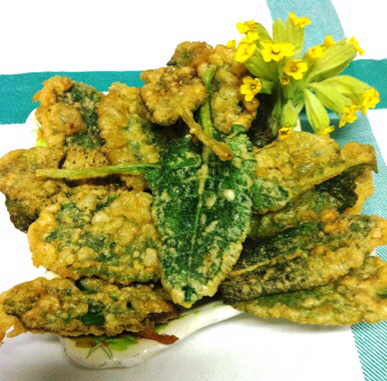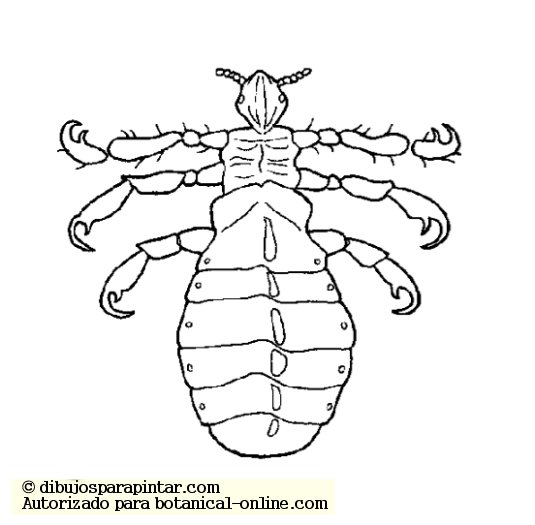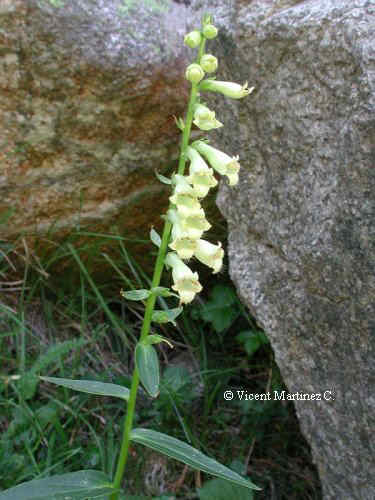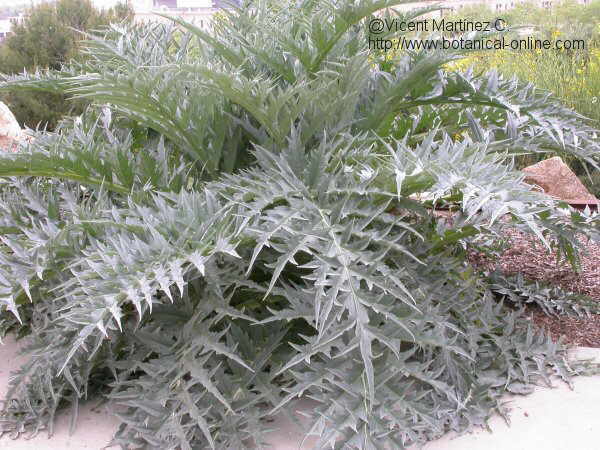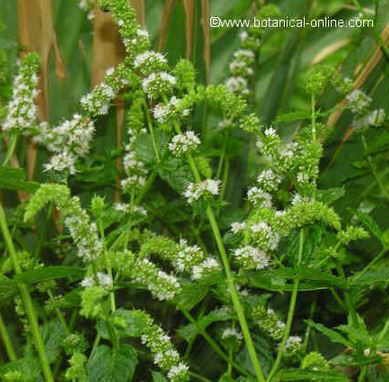Contents
Curative properties of clary sage
Clary sage as a medicinal plant
Clary sage (Salvia sclarea L.) is a very hairy, viscous and strong-smelling plant, which suggests that it contains a lot of mucilaginous fiber and it is rich in essential oils.
Like all sages, clary sage has strong bactericidal and vulneray properties. In addition, this type of Roman sage is traditionally attributed with antispasmodic, bactericidal, antioxidant, cordial, balsamic, resolutive, anti-inflammatory and anti-ophthalmic virtues. Its infusion is digestive and carminative.
It is also an excellent therapeutic aromatic plant, since its aroma has strong soothing properties, which have now been demonstrated in scientific studies.
Beneficial uses of clary sage
Among its properties, we must point out the following:
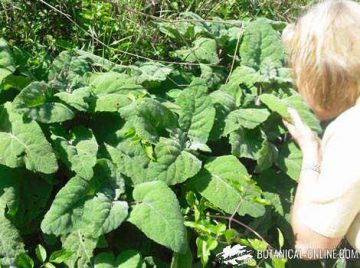
- Digestive: Due to its content in essential oils and rosmarinic acid, it favors the digestive process. (Infusion of a teaspoon of dried leaves and flowers per cup, after meals)
- Liver: It is rich in ursolic acid, potent hepatoprotective. (Infusion described above)
- Respiratory system: Very useful against respiratory infections and their symptoms, such as colds, sore throat, cough, etc. These properties are granted not only for the antimicrobial components of its essential oil, but also for its richness in mucilages, with emollient, antitussive and bechic properties. (Infusion of a teaspoon of dried leaves and flowers per cup, after meals)
- Urinary incontinence: Aromatherapy with sage essence has been used to relax patients with urinary incontinence successfully.
- Depression and stress: Clary sage shares the medicinal properties with other salvias for the nervous system. However, Dr. Leclerc especially recommended this type of sage, the amaro, in people with very weak nerves. The essence of clary sage has properties against depression and stress, demonstrated in scientific studies. (Smell a few drops of essential oil of Roman sage or amaro)
Other uses of clary sage or amaro
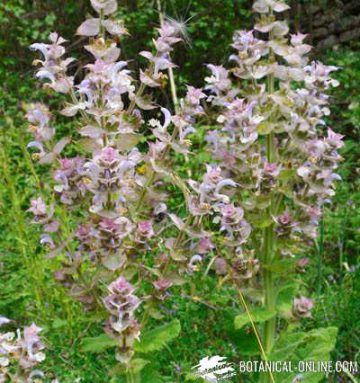
- Desire: Formerly sage essence was added to the dishes to increase desire. For these purposes it was already described in the Dioscorides texts.
- Nervous system: Traditionally sage is considered a toning of the nervous system in states of depression, fatigue, students during exams, spring asthenia, decay or passivity.
- Obesity and diabetes: Due to its anti-inflammatory properties, a clary sage infusion is highly recommended in people with obesity, type 2 diabetes and overweight problems. There are currently a series of studies, for the moment in animals, that have proven how the administration of this plant is able to counteract the inflammation that accompanies obesity and therefore decreases the damage caused by inflammation (metabolic problems such as high cholesterol , damage to the arteries, etc.) (Accompany with anti-inflammatory diet)
External remedies with clary sage
Roman sage to heal wounds
In external use, the salvias are used as a vulnerary to heal wounds, due to their content in mucilages and tannins (Compress soaked in the infusion of 20g -dry plant-) or 50 / 100g-fresh plant- per liter. Let it cool and apply on the skin with a clean gauze)
Roman sage mouthwashes are useful in oropharyngeal infections (Gargle with the anterior decoction for the treatment of sore throat, pharyngitis, laryngitis, gingivitis, hoarseness or aphonia).
Clary sage as a sight remedy
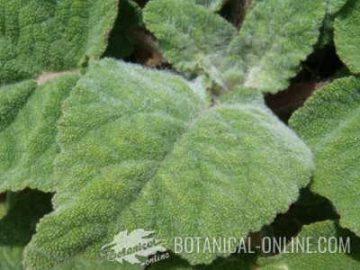
The ancients used the seeds of Roman sage to clean the eyes. To do this they placed the seeds with honey under the eyelids and opened and closed the eye.
However, this practice is not recommended, since the hard parts of the seeds can seriously injure the eye.
The medicinal part of the seeds is their mucilage, and these can be extracted by infusion.
Therefore, to use clary sage as a remedy for the eyes, it is preferable to infuse the seeds and apply, cold, in the form of compresses on the eye, provided there is no medical contraindication or eye infection.
Sage types or species
It is possible to distinguish different types or species of sage. There are even different varieties of sage prepared especially for garden ornamentation. Among the main sages we can find :
- Clary sage (Salvia sclarea L.): Ostentatious sage of large leaves, very aromatic, worked on this page.
- Common sage (Salvia officinalis L.): It is the species of sage traditionally used for medicinal and gardening purposes.
- Meadow clary or meadow sage (Salvia pratensis L.): Smaller than common sage, since it generally does not exceed two feet high.
- Candelabrum sage (Salvia candelabrum L.): Do not confuse this plant with meadow clary, a sage of small size – similar to meadow clary, but that differs because its stems are more herbaceous, hairy , and its flowers appear in long twigs, in groups.
- White clary or white sage (Salvia verbenaca L.): Inflorescence shorter than the rest of the sage. Same bactericidal properties.
- Mediterranean sage or African sage (Salvia aethiopis L.): Sage of just over 2 handst high, characterized by wide and very branched inflorescences, which forms a structure reminiscent of a candlestick. White and large flowers. Less aromatic than other sage and not so bitter.
![]() More information on sage
More information on sage

